8 Things Every Loyalty Program Needs to be Successful
If you’ve ever baked bread before, you know there are a few critical ingredients. Without yeast, the dough won’t rise. Without water, the yeast won’t activate. Without flour, your loaf will lack structure.
Leave out just one important ingredient, and you’ll end up with a flat loaf or a hard brick - neither of which achieve your intended goal.
Like with baking, setting up a loyalty program to drive growth means understanding the role of every key element and properly enabling each one to help support your success.
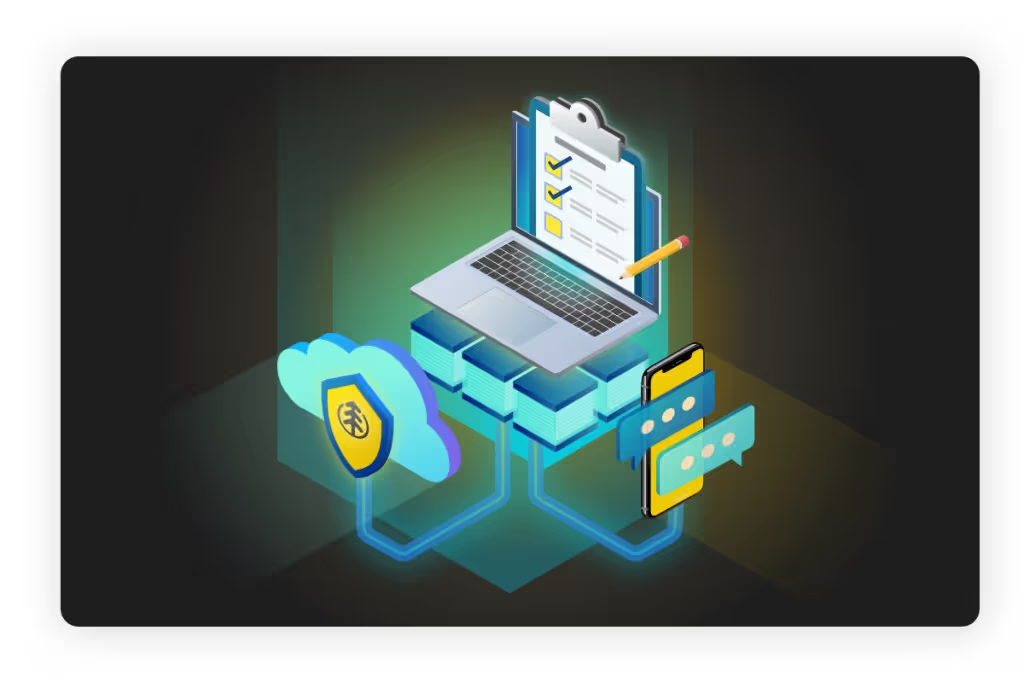
While building customer loyalty in the digital economy presents multiple advantages for user engagement and reward fulfillment, it is not without its unique challenges that require careful attention and management.
You may not need to worry about physical inventories of punch cards or stamps, but customers still expect a consistent, safe, and personalized experience with your brand online.
In this article, we’re diving into the technical features behind great loyalty programs.
The 8 key features of every successful loyalty program
1 - Custom Rewards
We know that the quality of your rewards can make or break your loyalty program. We also know that not all customers want the same thing, and are expecting that companies take greater care in offering rewards that satisfy a customer’s needs.
2017 data from Epsilon indicates that 80% of consumers are more likely to do business with a company if it offers personalized experiences, and 90% find personalization appealing.
The whole point of lifecycle marketing is to deliver relevant messaging and offers to encourage positive behavior from customers - something that can only be done when you have complete control over what you’re using as an incentive, whether it’s a gift card, discount, or early access to the next sale.

Learn more about choosing the best rewards here.
2 - Custom Reward Triggers
In addition to offering specific incentives, the best loyalty strategy is one that can reward customers for different actions as they mature with your brand. Controlling when a customer receives a reward is just as important as what they receive.
If you’re only able to send rewards when someone makes a purchase, you’re missing out on opportunities to drive product adoption by engaging customers at earlier and later stages in the lifecycle.
Whether you want to reward new users for filling out their profile, or qualify a customer for the Platinum VIP status after 10 purchases, you need a way to customize reward triggers for delivering the best customer experience.
In order to make the most of your customer triggers, your loyalty program must be supported by a platform that accepts custom events, and lets you specify which programs rely on which events without having to constantly make changes via your development or product team.
3 - Multiple Programs
A successful loyalty strategy for a digital business involves more than just choosing one loyalty initiative and hoping it drives profit.
Creating an effective loyalty strategy means designing multiple programs to target customers at every stage of their journey with your brand.
Take Uber’s new loyalty strategy as an example. They acquire new users with referral offers, reward top riders with exclusive perks, and re-engage lapsed customers with special incentives.
To achieve this, each program needs unique triggers, rewards and terms in order to support a distinct goal and meet the needs of different customers.
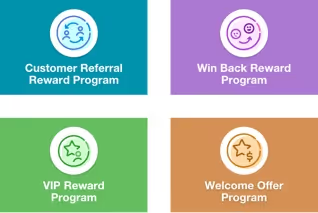
By having the ability to regularly launch new programs, you’re able to test more possibilities and are more likely to build a successful loyalty program. Much like email marketing, sometimes you send an email that no one opens, but you can easily apply your learning to the next email for better results.
If you need to go back to your development team every time you want to try something new, you will move much much slower than your competitors.
Learn more about the different programs you can integrate into your loyalty strategy.
4 - Custom Branding
In addition to increasing program visibility across multiple platforms, users expect a seamless and consistent experience with your brand at every interaction.
The look and feel of your loyalty programs (fonts, colors, images, etc) must be well-integrated into all widgets, emails, and CTAs.
Brand consistency plays an important role in building trust with consumers, especially when you’re collecting personal or payment-related information. If a user clicks into a referral widget that looks nothing like your website, they’ll become suspicious and less inclined to move forward, hurting your conversions.
Consistently presenting your brand across all platforms can actually increase revenue by up to 23%.
5 - Cross-Platform Access
Modern consumers spend time on multiple places online, using a wide range of devices. You need a way to reach customers everywhere they are by providing engagement opportunities across all channels.
According to StoneTemple, 58% of site visits in 2018 (U.S.) were from mobile devices, and mobile devices made up 42% of total time spent online.
By leveraging omni-channel messaging (i.e. continuity across mobile, web, email, and in-app components), you’ll never miss an opportunity to engage with a prospect or customer.
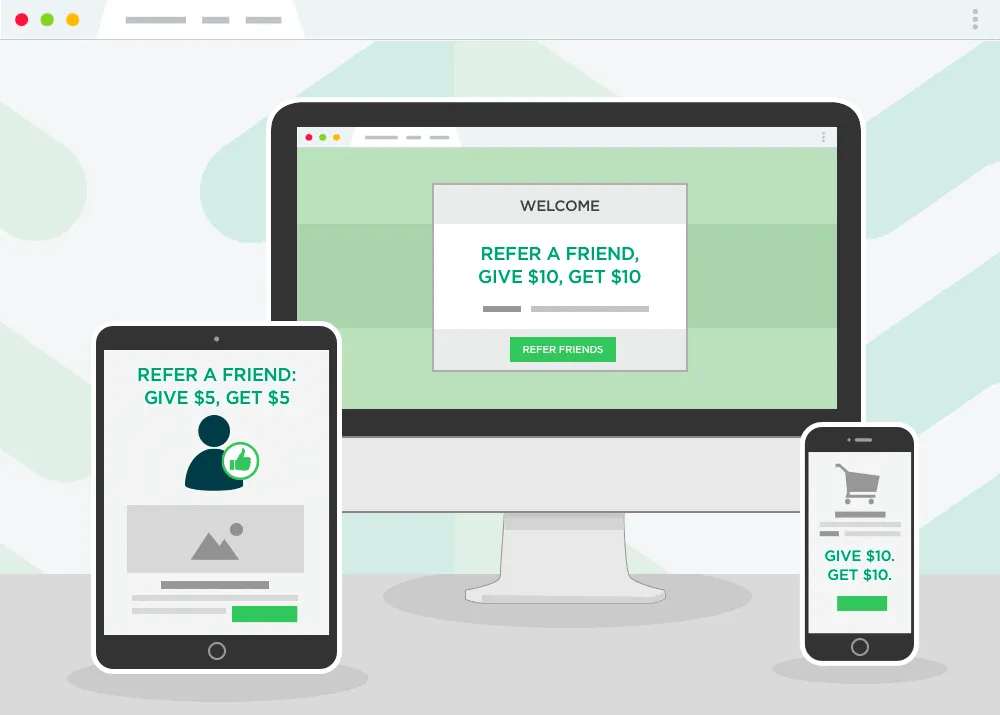
6 - Audience Segmentation
Given that your top 10% of customers spend almost 3x more per transaction than the lower 90% of customers, you need a way to identify and reward each segment accordingly.
As a customer who made 10 purchases in the last month, you wouldn’t feel appreciated if you received the same bonus gift as a user who signed up for an account yesterday.
Segmenting your users lets you better understand their interests, follow their activity, and more accurately provide value that matches their needs. Part of this involves identifying your top customers and making efforts to retain them, or identifying and re-engaging at-risk customers who haven’t made a purchase in a while.
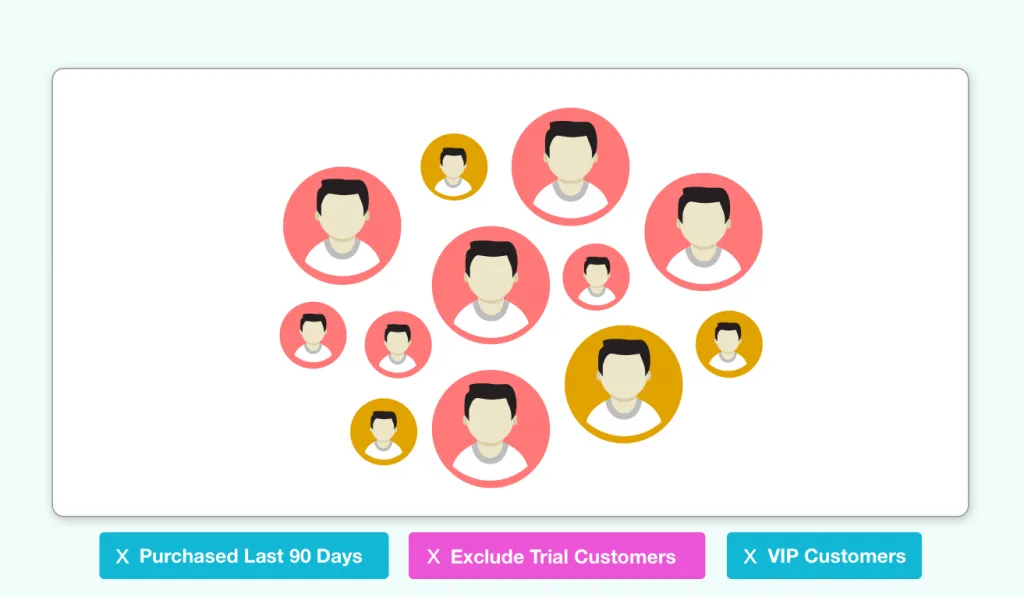
7 - Fraud Management
It’s no secret that companies in the digital economy face challenges with online fraud. The rewards offered in your loyalty programs can be the target of fraudulent activity like fake referrals, account takeovers, reward exploitation, unauthorized broadcasting, and account cycling.
From 2016 to 2017, the percentage of cyberattacks targeting loyalty and rewards accounts nearly tripled, costing companies more than $2.3 billion (source). So long as fraudsters continue to view points as currency, reward programs will remain a target.
Seventy-two percent of loyalty program managers report experiencing fraud, which means that without the ability to identify and take action on suspicious activity, online fraud can have a serious negative impact on your programs.
Fraud against your loyalty programs not only costs you money, but can sever relationships with customers. Make security and fraud prevention a high priority when designing your loyalty program to ensure that the money you make from your loyalty efforts actually ends up in your bank account.
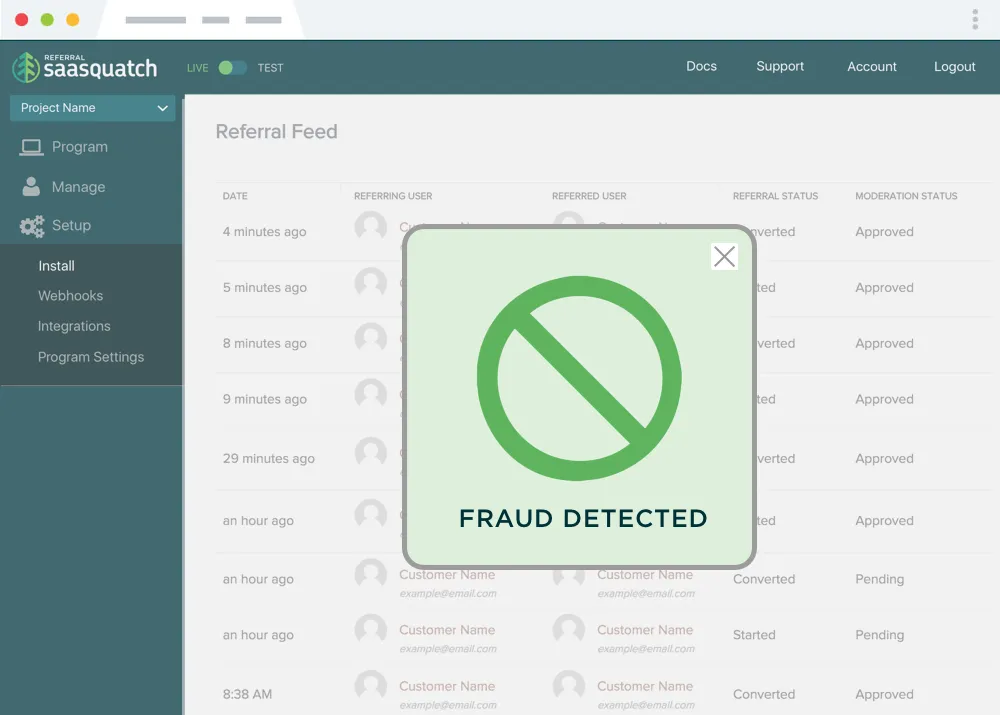
8 - Analytics & Data Reporting
Consumers change their preferences, competitors switch up their strategies, and your company’s goals must shift accordingly. As a program manager, you need a way to understand how external and internal factors affect the success of your loyalty programs.
Your loyalty strategy is likely to undergo iterations to find for the best results, but as Peter Drucker puts it, “If you can’t measure it, you can’t improve it.”
Reporting and analytics dashboards provide insight into all important elements of your programs like rewards redeemed, conversions completed, and revenue generated.
You’re more likely to see success when you consistently measure the health and performance of your programs against the goals you set out to achieve. Knowing how customers are engaging with your program indicates whether or not you’ve properly evaluated their preferences.
Data from McKinsey revealed that companies who make extensive use of customer analytics can see a 126% profit improvement over companies who don’t, so there’s missed opportunity in not treating your data with high importance.
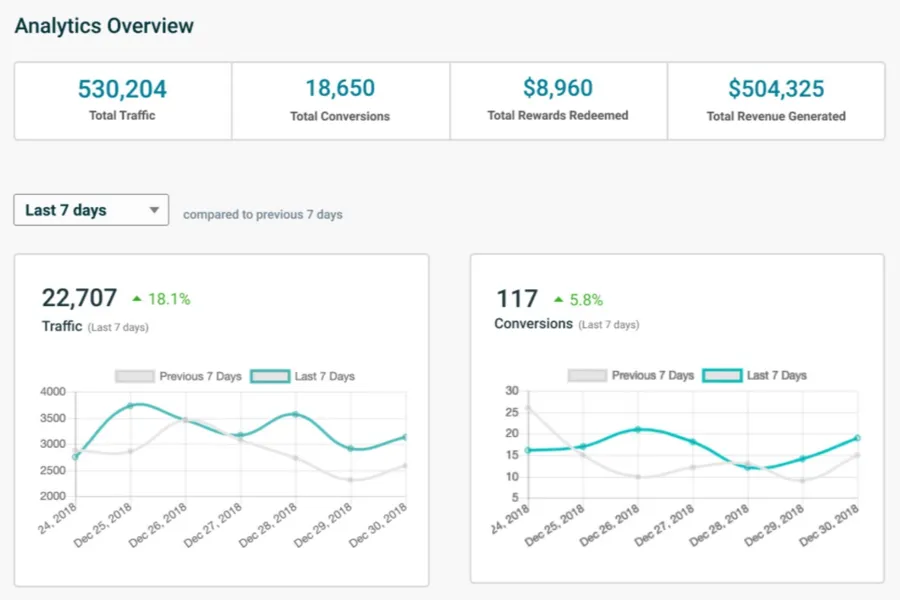
To learn more about evaluating the performance of your loyalty programs, check out this article.
Why should you use dedicated software?
Many digital organizations don’t have formalized loyalty and referral programs in place mainly because these can appear difficult to implement when compared to other marketing initiatives.
Building a custom solution in-house to support your loyalty efforts can quickly become expensive, time-consuming and complicated, which is why many companies rely on a dedicated third-party platform to support a positive ROI.
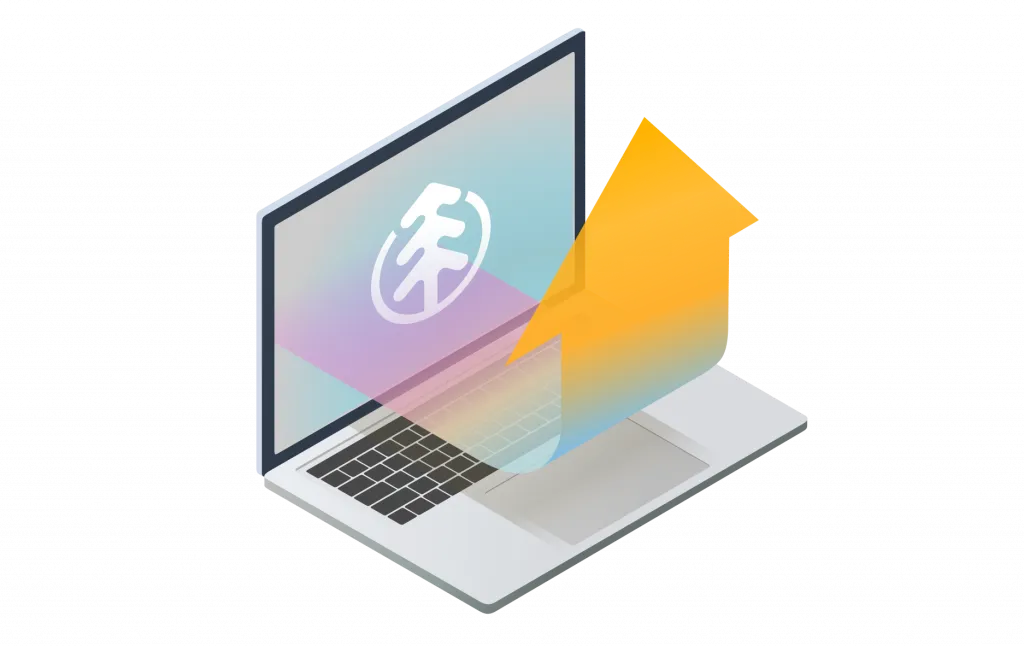
Customer loyalty software automates your loyalty program and lets you quickly leverage data to make immediate iterations and adjustments for the best results.
It lets you launch new programs and initiatives in minutes without needing a full-time developer on the job, while you’re backed by a team who fully understand the product and its code
Final Thoughts
A big part of knowing how to run a loyalty program is understanding what technical features you need to set yourself up for success.
If you’re looking for a way to integrate all of these features into your loyalty program, opt for leveraging a dedicated software platform to do the heavy lifting.
Whatever tools you decide to leverage, having a complete overview of the customer lifecycle is key to building a loyalty strategy that drives results and keeps customers engaged.
To learn more about designing a successful loyalty strategy in the digital economy, sign up for the Digital Loyalty Academy today. Free access for the first 700 students.
